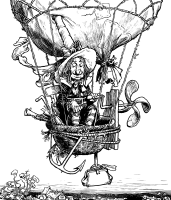Elemental Battle
A simple and well-loved card game
Did ya hear that the Lord's wee son lost loads of the family gold in a game of elemental battle at me bar? The way the lad swore... I betcha his father wasn't happy when he came on back home.Elemental Battle is a cardgame often played by the Northern Humans as well as the Treil. The game originates from the Treil Iwachi, but a human traveller brought the game with him back home around a hundred years ago.
Rules of Elemental Battle
The game is played by two players, with all 50 cards in play. At the beginning of the game, 10 cards are taken out, 2 of each type. The two players are now presented with a card of each type and they can pick 3. The rest goes back into the card-pile and it's shuffled before it is split into 2 even halves and given to the two players.
Now, each player chooses a card each, lay them face down and turns them around at the same time. One of them will win the card-battle, or it will be tied.
The illustration shows what other cards each type would win and lose to in an elemental card battle.
In case of a tie, no cards are drawn before all of the three elemental battles (the tied and the two new) are settled.
Cardgame Players
2
50 (10 of each) Card-types
5. Fire, nature, water, earth, air.
Strengths and weaknesses
| Type | Wins over | Loses to |
|---|---|---|
| Fire | Nature
Earth |
Air
Water |
| Nature | Water
Air |
Fire
Earth |
| Water | Fire
Earth |
Air
Nature |
| Earth | Air
Nature |
Water
Fire |
| Air | Fire
Water |
Earth
Nature |
I always lose in Elemental Battle... I've heard there's some sort of strategy, but I simply can't seem to understand what they all mean.
You wanna play? Ma gave me a deck!









First, everything design in your article is beautiful. I love the flow of your art, the softness of the lines and colors and I'd really like to know what program you use to draw. Secondly, the design of your text never wears too much on the eye. Splitting up your information into the sidebar and into two columns makes your article easy to read and skim for necessary information before diving head in. I am also curious as per how you got your article to have two columns. Second, your overall game is very intuitive to understand. I am reminded of another card game that involved slamming two cards on the table and the one of higher value wins. I like this one in its abstract concepts. Third, perhaps my favorite of all is how you convey the character of your world through your short quotes. I have always been a fan of this in lore books for games and what not, and it allows me to understand how those inside your world see and use your game. Thank you for the read!
Thank you for the feedback! I was inspired by the card game you’re talking about, we usually just call it “War” :3 I’m happy you liked the setup! The columns can be made with bbc, whenever you’re writing an article, there’s a drop down menu in the right side a bit down where it says BBC or something like that. In there, there’s many cool things including columns :3